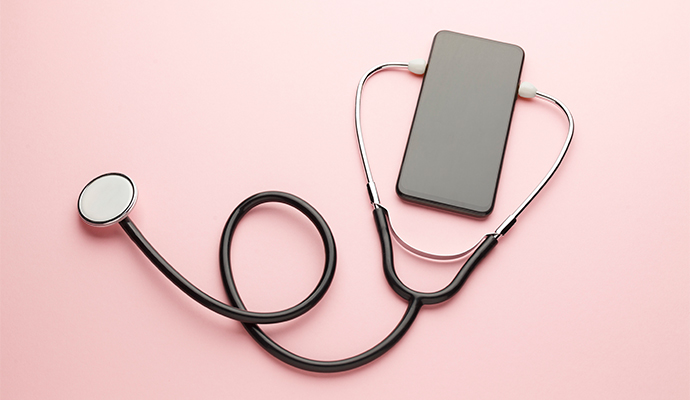Audio-Only Telehealth Has its Fans (Patients) and its Critics (Providers)
While the US debates the value of the modality, a South Korean survey finds that patients like to use audio-only telehealth platforms to connect with their care provider - but their providers aren’t so sure.

Source: Getty Images
- Patient satisfaction was significantly higher than provider satisfaction after using audio-only telehealth during the coronavirus pandemic, according to a survey conducted in South Korea.
While telehealth is not legally allowed in South Korea, the Ministry of Health and Welfare temporarily permitted its use due to hospital closures at the start of the pandemic. Between February 24 and March 7, 2020, 6,840 patients used audio-based telehealth.
Researchers sent surveys to patients and providers alike to gauge their satisfaction with the telehealth platform, which includes landline telephones and online services without video. They asked questions about ease-of-use, interaction quality, reliability, satisfaction, and future use.
They received responses from 906 patients, 55 doctors, and 100 nurses. Patients reported greater satisfaction levels in each category, compared to doctors and nurses.
Around 87 percent of patients reported that they were satisfied with their provider interaction and felt they could effectively express their feelings during an audio-only telehealth visit. Most patients (87.1 percent) also responded that their telehealth visit was just as reliable as an in-person visit would have been.
Meanwhile, the providers’ opinions differed drastically. Less than 10 percent of doctors and nurses were satisfied with their ability to interact with patients through an audio-only telehealth visit compared to in-person visits (7.3 percent and 9 percent, respectively). Only 14 percent of providers felt that the visits were as reliable as an in-person visit.
Patients and providers also had differing opinions on the convenience of telehealth. Nearly 80 percent of patients were satisfied with the convenience of telehealth and found it easy to use. Providers were not as satisfied, with only 38.2 percent of doctors and 30 percent of nurses reporting that they found telehealth convenient.
Overall provider satisfaction levels were slightly higher than the other categories but were still significantly lower than patients’ satisfaction levels. The majority of patients (86 percent) agreed that they were satisfied with the telehealth system, while 52.7 percent of doctors and 48 percent of nurses agreed with that statement.
More patients reported that they would use telehealth again in the future compared to the doctors and nurses, an indication that the nation’s government has its work cut out if it wants to support telehealth in the future. According to the survey, 85.1 percent of patients would use telehealth again, while only 32.7 percent of doctors and 37 percent of nurses said they would.
An additional questionnaire for doctors and nurses revealed their main concerns regarding telehealth use, with safety topping that list. Most of the providers (85.5 percent) answered that they could not accurately observe their patients’ medical conditions during the telehealth visit like they would have been able to with an in-person visit.
According to the study, more than 80 percent of providers are concerned about communication as well. They said they were unable to explain the patients’ conditions over the platform and did not think the patients fully understood their conditions either.
Based on those responses, the researchers listed issues with diagnosing patients and communicating with them as the two biggest barriers to audio-only telehealth acceptance, while patient convenience and the ability to prevent transmission of infectious diseases were listed as the biggest benefits.
Overall, providers felt the negatives outweighed the positives for audio-only telehealth. While 85.8 percent of the doctors and nurses agreed that telehealth is appropriate for emergency situations such as a pandemic, only 27.7 said it would be appropriate at all times.
In contrast, 40 percent of the doctors and nurses surveyed said telehealth would be appropriate if it involved an audio-visual platform, saying it would be easier to fully examine and diagnose a patient’s condition.
